Leather Britches green beans are something my grandmother would make during the Great Depression and World War II eras. They’ve been around for hundreds of years and were a popular form of preservation before people learned how to can green beans.
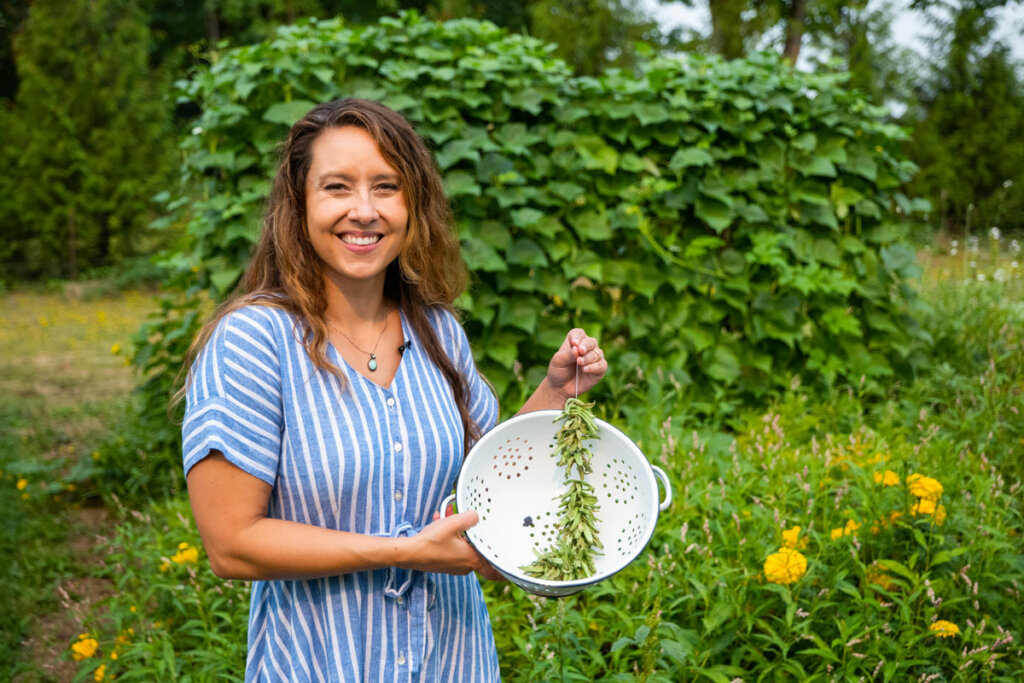
Table of Contents[Hide][Show]
- Heirloom Tarheel Green Pole Beans
- What Are Leather Britches?
- What Beans Make the Best Leather Britches?
- When To Harvest Beans
- What Do Leather Britches Taste Like?
- Why Are They Called String Beans?
- How to Make Leather Britches
- How to Store Leather Britches
- Ways to Prepare and Eat Leather Britches
- More Preservation Recipes and Resources
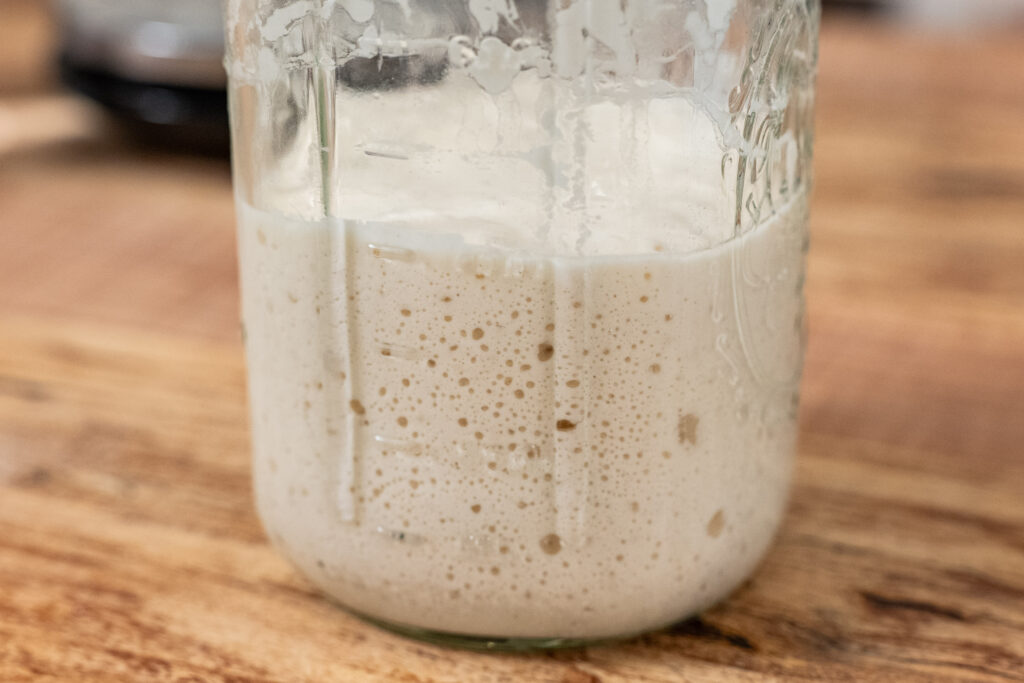
🍞 Struggling With Sourdough?
If your starter won’t take off, your loaves are dense and hard, or sourdough just flat-out overwhelms you…
👉 I’ll show you how to fix all of it.
Join my FREE live workshop and learn how to make a bubbly, active starter—the right way, from Day One.
🗓️ Jan 12 @ 1pm PT
Heirloom Tarheel Green Pole Beans
My family has been saving Tarheel pole beans for hundreds of years. In the 1940s, my grandparents brought the seeds to Washington State from Avery County, North Carolina.
But my dad tells me his family has been seed-saving them for over a hundred years before that. Needless to say, this variety is near and dear to my heart!
Whenever I share about my family’s green beans, I’m always asked where people can get them! You can watch this video where I share my family’s story of seed-saving this particular strain of beans for over a hundred years through five generations.
Unfortunately, the certification and laws required for selling seeds in Washington state are simply too much for our small operation. I just grow them, choose the healthiest-looking beans, and then save the dried beans for our home use and to have a little bit extra each year.
What Are Leather Britches?
Leather Britches (also known as “shuck beans” or “shucky beans”) are an old-time traditional Appalachian method of preserving green beans. They are fresh string beans preserved by stringing and drying rather than canning or using other forms of preservation.
The great thing about this method of preservation is that you don’t have to heat up your house with a pressure canner or even a dehydrator to preserve them safely. This was especially important in Appalachia, where it is typically hot and humid during the summer months when beans are ready to harvest.
During the Great Depression, my grandma canned some food, but they had a limited number of canning jars, so she really had to choose what food went into Mason jars vs. other forms of food preservation that were available to her.
My mom has great stories of sitting on the back porch stringing a bushel of beans that would be turned into leather britches. Then later, smelling them simmering away all day in a pot on the wood stove for dinner.

Subscribe to Melissa K. Norris!
Get updates on the latest posts and more from Melissa K. Norris straight to your inbox.
We use your personal data for interest-based advertising, as outlined in our Privacy Notice.
What Beans Make the Best Leather Britches?
Traditionally, leather britches were made with a greasy bean, an heirloom bean that is slick without fuzz on the pod. Our Tarheel green pole beans are a greasy variety, but any hardy, non-fuzzy green bean will be great for dried green beans and leather britches. Others typically used are Lazy Wife, Turkey Craw, and Pink Tips, or half runner varieties.
It’s best to choose a variety (preferably an heirloom variety) that has thicker skin and larger beans. But don’t let your variety hold you back! Even if you’ve already planted your beans this year and they’re not an heirloom or a larger bean variety, give these leather britches a try anyway!
Like I always say, you learn best from doing!
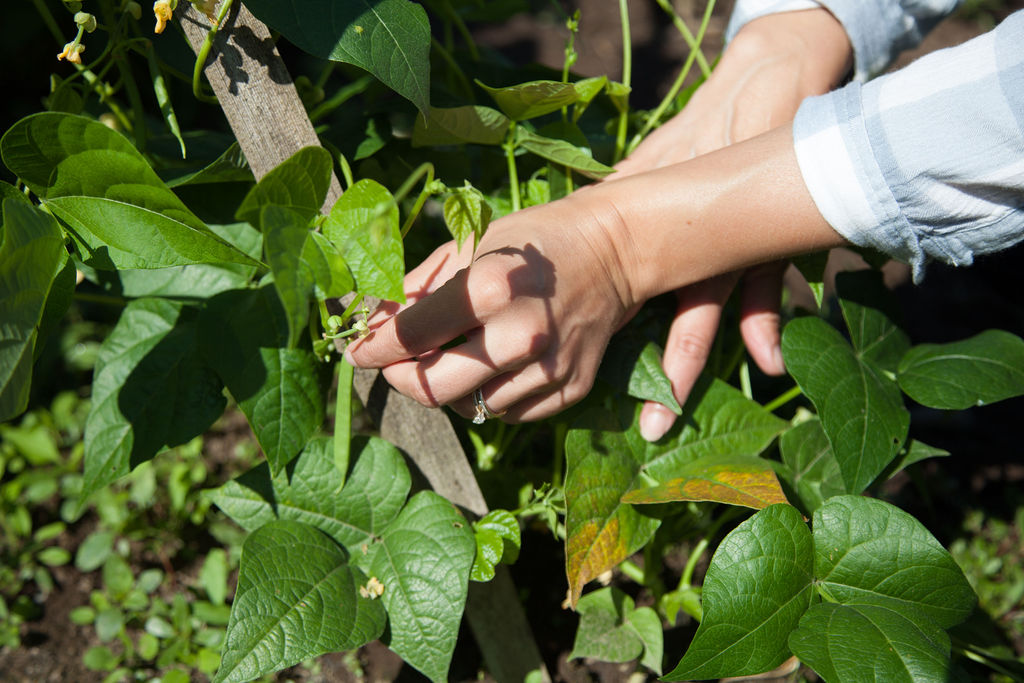
When To Harvest Beans
When making leather britches, you really want to use beans that aren’t overripe. They should be at the perfect eating stage, tender and crisp when snapped.
To know when your beans are ready for harvest, check out this blog post on how to grow and when to pick pole beans.
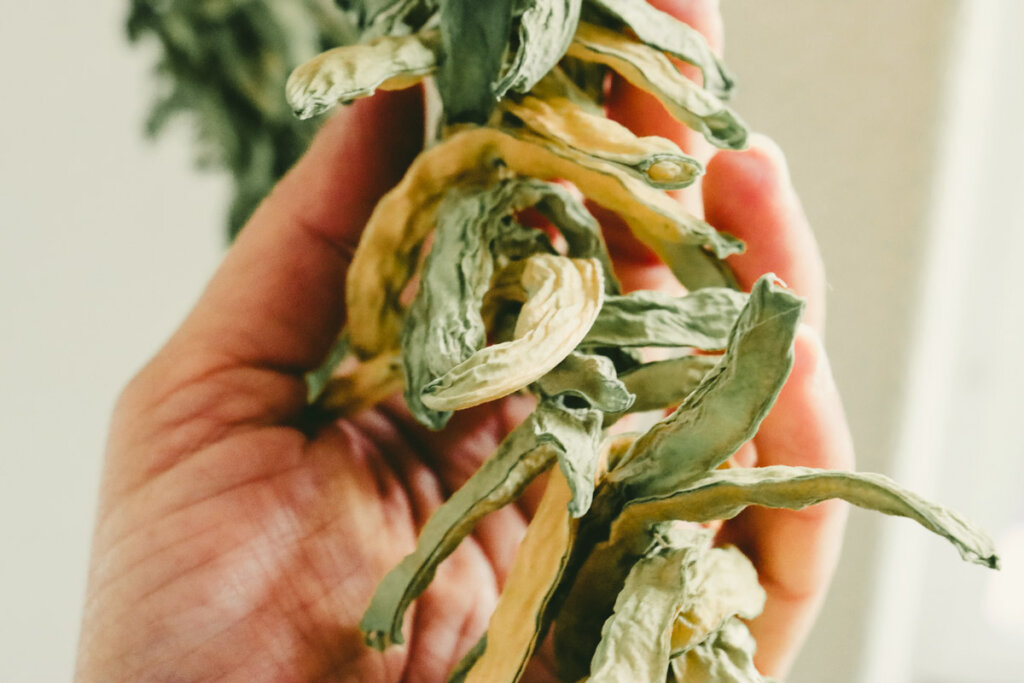
What Do Leather Britches Taste Like?
I showed how to cook leather britches in this post, but just know they won’t taste like fresh green beans or canned green beans; they’re chewier. However, just as fresh and canned green beans are delicious in their own right, leather britches have a distinct and delicious flavor of their own.
When string beans are dried using this method, they’ll need to be cooked low and slow in order to rehydrate and develop flavor. Continue reading for more tips on how to prepare leather britches.
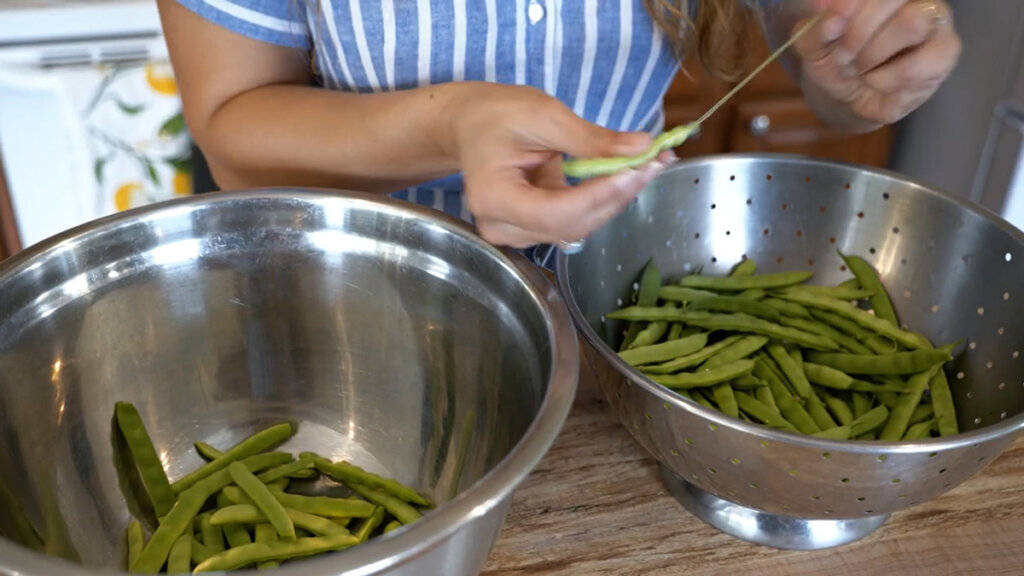
Why Are They Called String Beans?
Some green beans are referred to as “string beans” because they have a long, fibrous “string” that grows on one side of the bean. I know the photo above is a bit blurry, but you can see me snapping off one end of the green bean and then pulling the long, fibrous “string” off of the bean.
Green beans are also referred to as “snap beans” because of the noise they make when you’re snapping the ends off the beans.
Don’t be fooled, though. Not all green beans are string beans, and only certain varieties have the string that must be removed before preserving or eating.
Trust me when I say you need to remove it! No one likes a piece of floss-like material in their mouth while enjoying dinner!

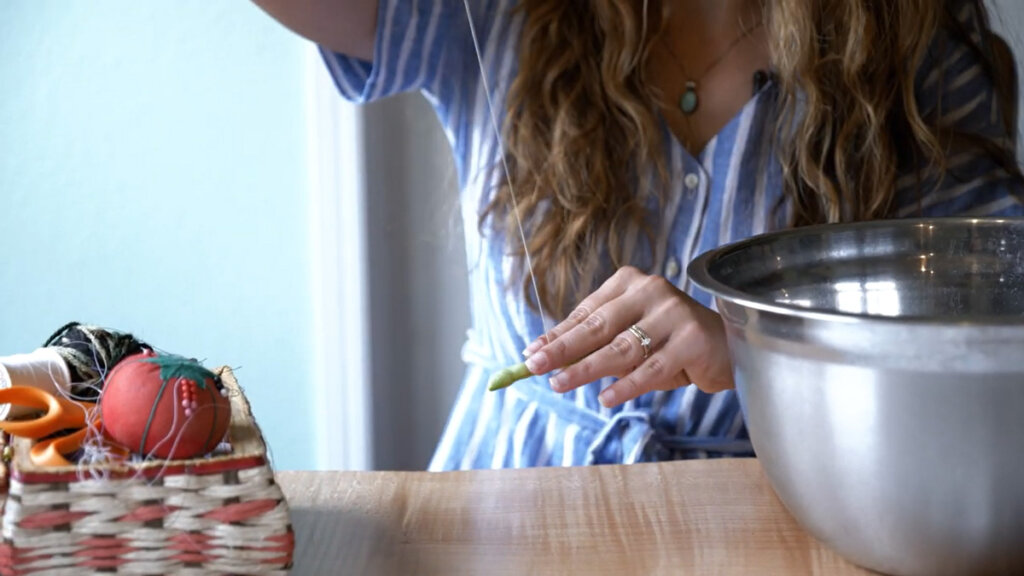

How to Make Leather Britches
- After harvesting your green beans (or picking some up at your local farmers market), you’ll need to give them a quick rinse, then string them by snapping off one end and pulling the string-like membrane off the bean. Then, snap the other end of the bean off.
- Grab an older sewing needle and a long piece of thread. Double thread your needle (the beans can get heavy if you’re doing a long strand). Tie off a large knot at the end of the string (if your knot is too small, the beans will just slip right over it).
- Take a bean and poke the needle through the middle of it. I like to poke through one of the actual beans rather than just through the green fleshy part; this will help the beans stay in place.
- Continue stringing your beans until you have a nice long line of beans. I like to do mine in about 1-2 foot sections, but ultimately, it depends on how many beans you’re harvesting at a time for how long your strand will get OR how much your family will eat in one sitting.
- Make a nice big loop at the top of the string and hang it from a hook where it’s out of the way, preferably in a warm, dry area with good airflow.
- As the beans dry, they will start to look leathery, hence the name “Leather Britches.”

How to Store Leather Britches
Once your leather britches are completely dry, you can store them in a cool, dark area of your home. A root cellar or dark pantry will do.
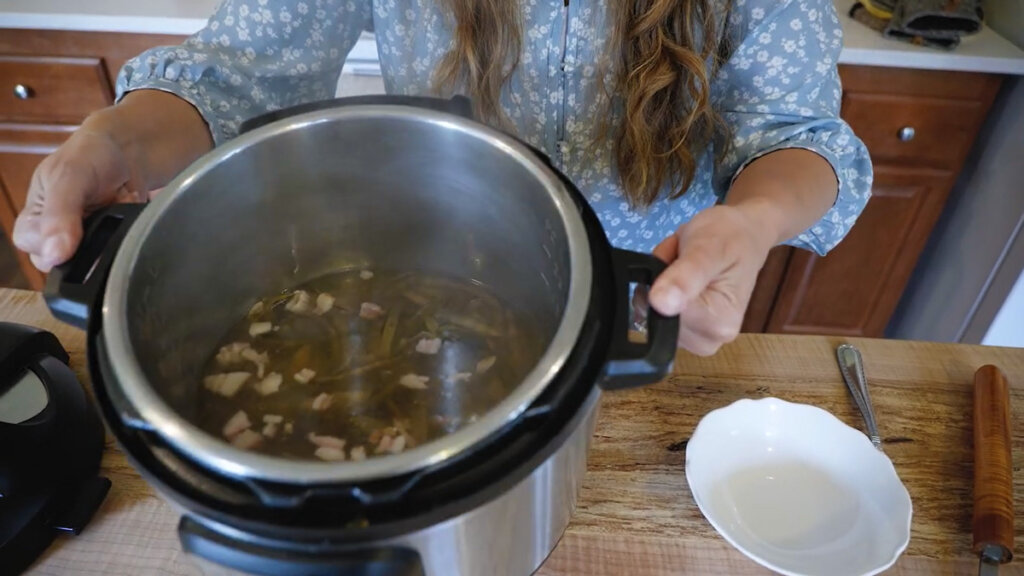
Ways to Prepare and Eat Leather Britches
Leather britches may seem off-putting to some. Probably because we’re so used to the convenience of frozen or canned green beans always at our fingertips. But I find it brings me joy to connect to generations past and experience food the way they ate it.
There are multiple ways to prepare leather britches. In fact, I have an entire blog post on how to cook leather britches, so I won’t go into too many details.
But some of the best ways to cook them are in a pressure cooker alongside a ham hock, then finished off in a cast iron skillet with a generous helping of bacon grease. Traditionally, instead of a ham hock, you’d add some fatback or salt pork. Bacon works just as well and will add the depth of flavor you’re looking for.
Leather britches make the perfect Southern side dish, especially when served with cornbread and BBQ brisket or pulled pork.
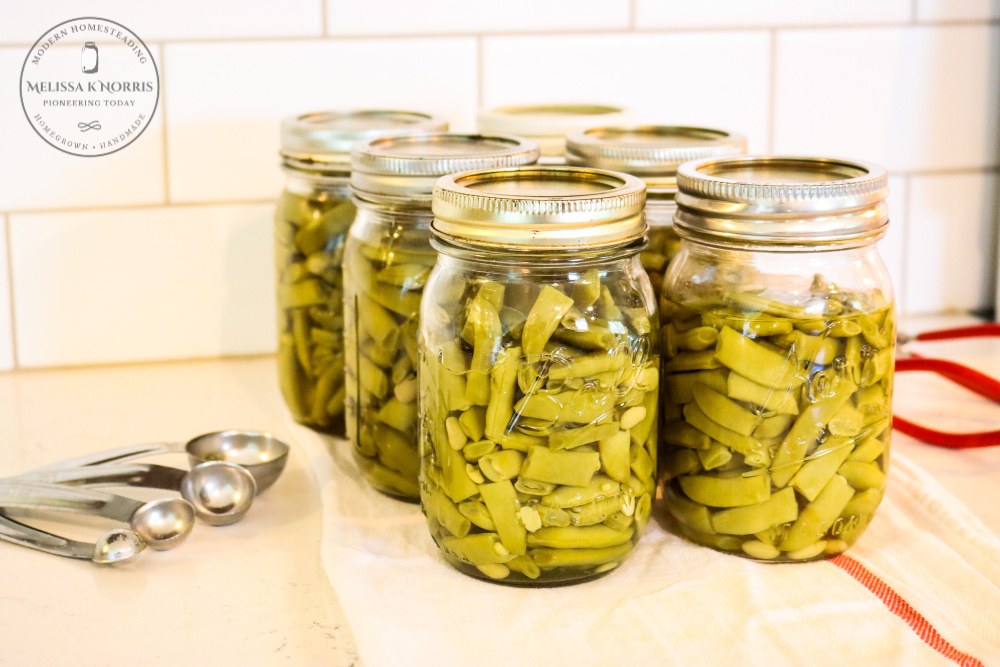
More Preservation Recipes and Resources
- How to Can Green Beans (Easy Raw Pack Method)
- How to Grow (and When to Pick) Pole Beans
- How to Cook Leather Britches Green Beans
- The Science of Home Food Preservation
- Forgotten Plants That Practically Preserve Themselves
- How to Pick the Best Preserving Methods
- Tips for Home Food Preservation – Seasonal Preserving Each Month
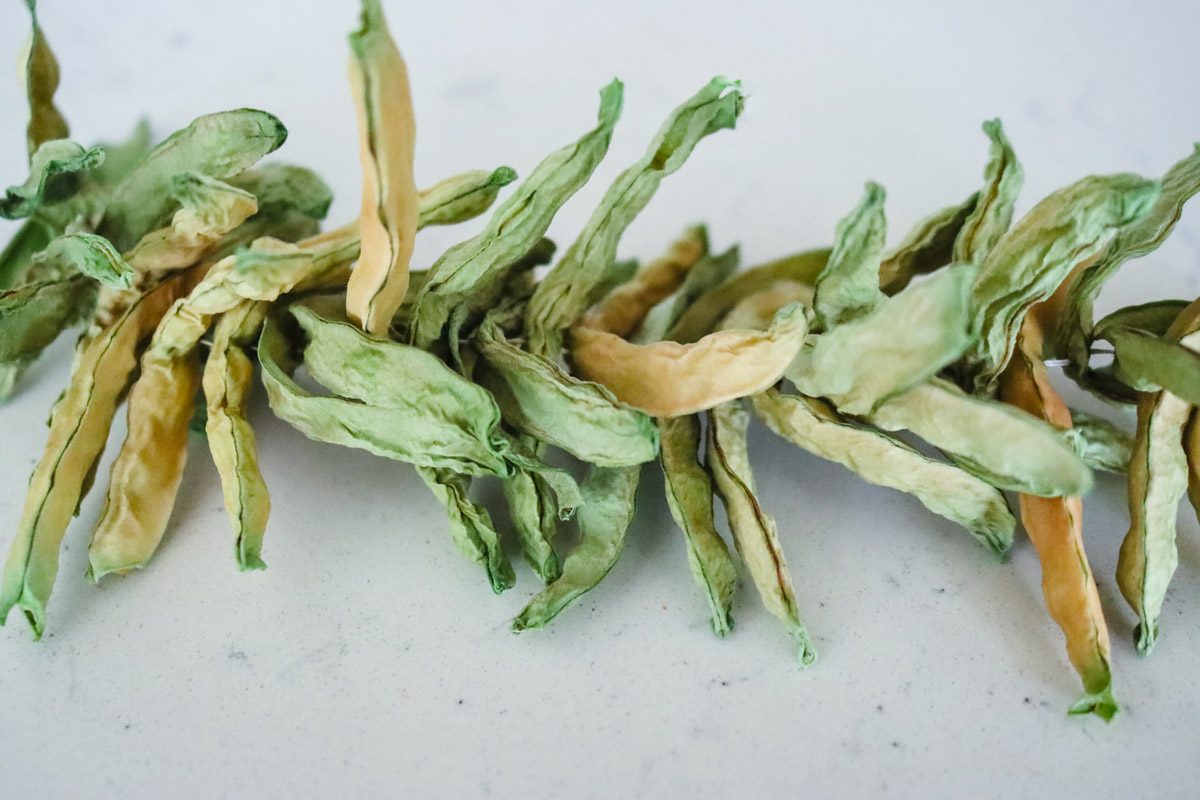
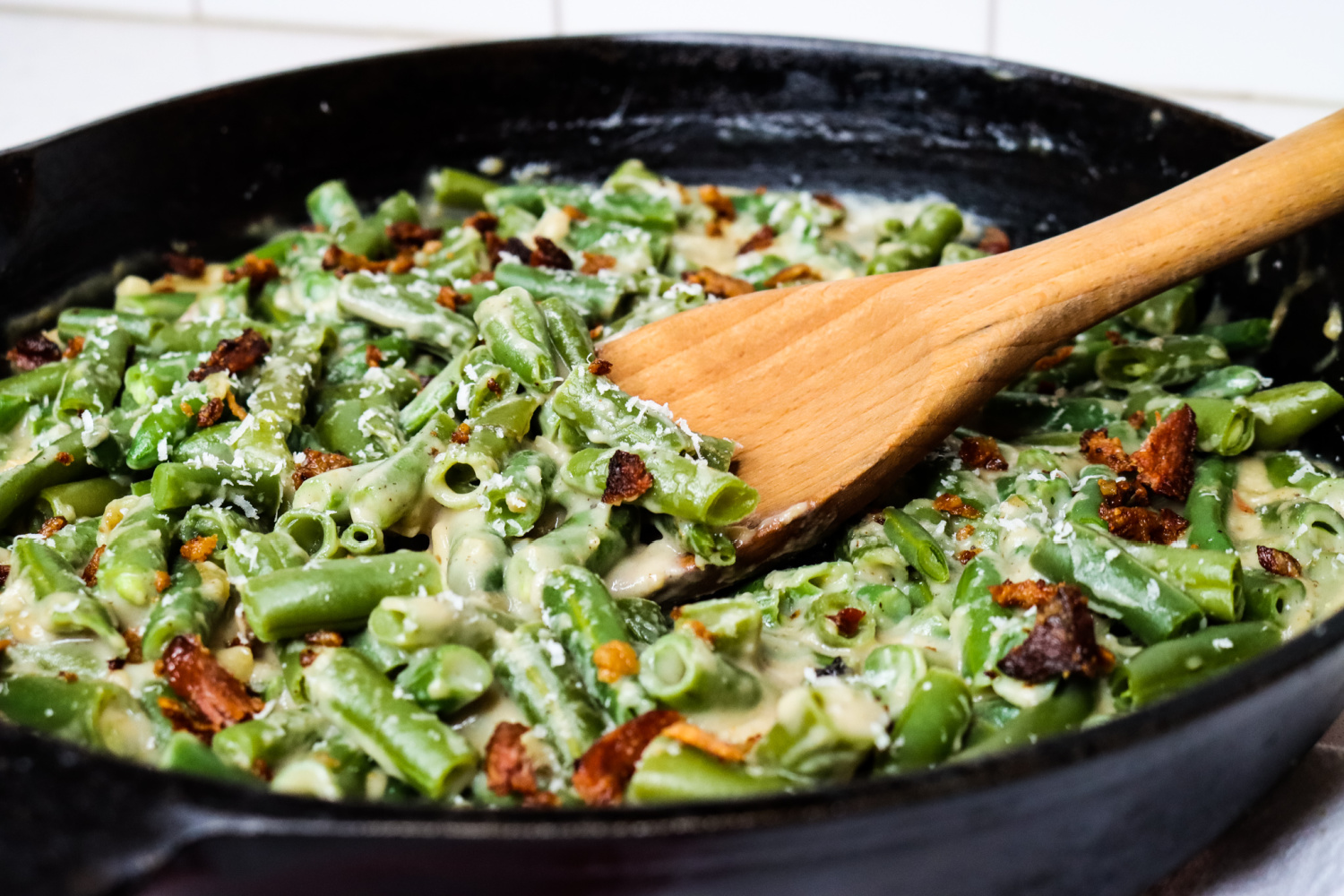

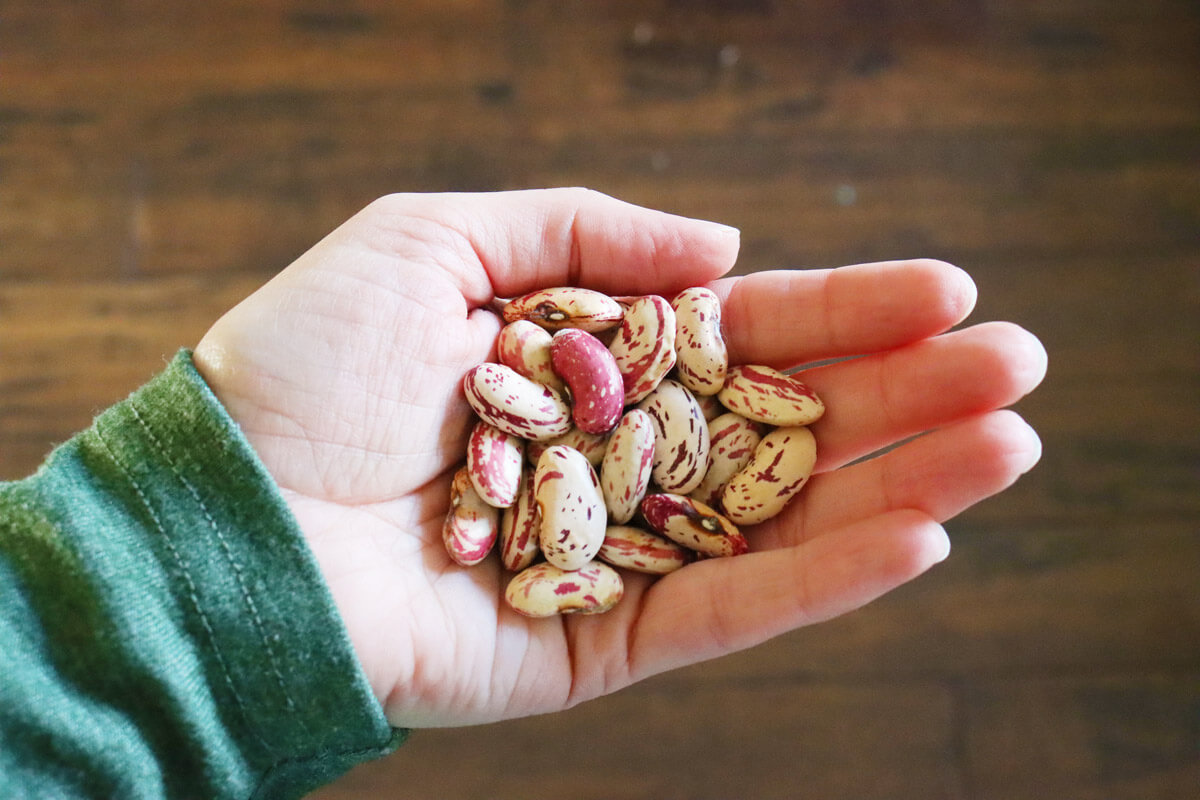






You are correct about the strings being “dental floss.” The strings don’t re-hydrate.
I was using “pink tip greasy” but the pods tended to separate during drying if I removed the strings. I switched to “lazy wife” and don’t remove the strings. I still like my pink tips for fresh beans, but now use nothing but lazy wife’s for leather breeches.
Hi Melissa! Thank you for this tutorial. My children and I attempted to dry beans this way a couple years ago as we were learning about pioneer days. Unfortunately our beans stuck to the string that I used (I think the string was too thick) and we weren’t actually able to eat them. I have no idea if the beans we used were the right kind as we only have one variety at our grocery store and we were living in an apartment at the time so we didn’t have any of our own. We only had one small strand so it wasn’t a big loss. With this method should the beans come off the string easily or is there a trick to do it correctly? Thank you!
I have heard beans referred to as leather britches but never really knew what they were thanks for the tutorial Mellisa
How to cook Leather Britches. We always broke the bean the thread was tied to ( we made 6-7 foot strings of beans ), then pulled the dried beans with dried pods off the thread, and broke them up into a big bowl, rinsed the dust off, put them in a pressure cooker with seasonings of choice (oil & salt & garlic & lots of water ) then pressure cooked them on the highest pressure setting till tender. Biscuits and garlic mashed potatoes on the side did not hurt.
Our family knows these as “shuck beans”. They were always on the Thanksgiving and Christmas table at my grandmother’s house. Cooked long with a big chunk of “fat back” in the pot to flavor them. My sister still preserves some of her bean crop this way. I think I may have to find some pole beans at the farmer’s market to have for my family this winter. Thank you for the tutorial and the walk down memory lane. 🙂
Oh wow I remember doing this as a child sewing up green beans and string them to dry they were so good.. Sure brings back childhood memories….Thanks for sharing
thank you for your information on green beans. I recall my grandmother stringing beans once I read your article. I did not recognize your name and deleted a message you had sent. Thankfully you sent another email. Thank you for sharing forgotten ways. Blessings upon you.
Thank you for the information about leather britches. It is great to know other ways than canning to preserve them. Also, thank you for the information about a greasy bean. I gave seen them listed in seed catalogs but didn’t know what they meant by the name. Thank you very much for all that you do for us. 🙂
Awesome, thank you!
When you go to eat these beans, do you just rehydrate them in boiling water as normal?
Hey there…
I was talking to an older Appalachian woman who told me to soak in water overnight, pour off that water, add fresh water, bring to a boil, then add fresh water once again, bring to a boil, reduce heat and cook low and slow – adding pork seasoning.
Melissa, I’m an Avery County NC girl and have lived here almost all my life. I really enjoy reading your articles and the information you share. A couple of years ago I decided to see if I could replicate the “shuck beans” I remembered from my Grannys. I used the greasy beans, like you described here, but I added a twist which seemed to work well for me…hasn’t killed any of us yet, anyway! When the beans were thoroughly dry I broke them off the drying strings and stored them in Mason jars, closed but not sealed. If you’ll remember how humid and quick to start mold and mildew it gets around here if you don’t use a wood cookstove, I think it was a good call. If that wasn’t straight thinking let me know! Thanks.
Do you ever have any problem with mold using this method? I know you say to dry them in a warm and dry area of your home, but humidity levels are pretty high in late summer.
Thanks for the info about leather britches. I’ve never grown pole beans, are they very different from regular string beans, either green or yellow? I have planted one more row of yellow beans and keeping my fingers crossed they will have time to mature before frost sets in here in central NYS. Thanks
I’m 81yo and still garden. I was born and raised in the Blue Ridge Mountains of Virginia but now I live in Maine. When I was growing up I remember my granddaddy stringing green beans to make his leather britches! This article brought back great memories. I just shelled out my scarlet runner beans to save them for me, my daughter and son to plant next year.